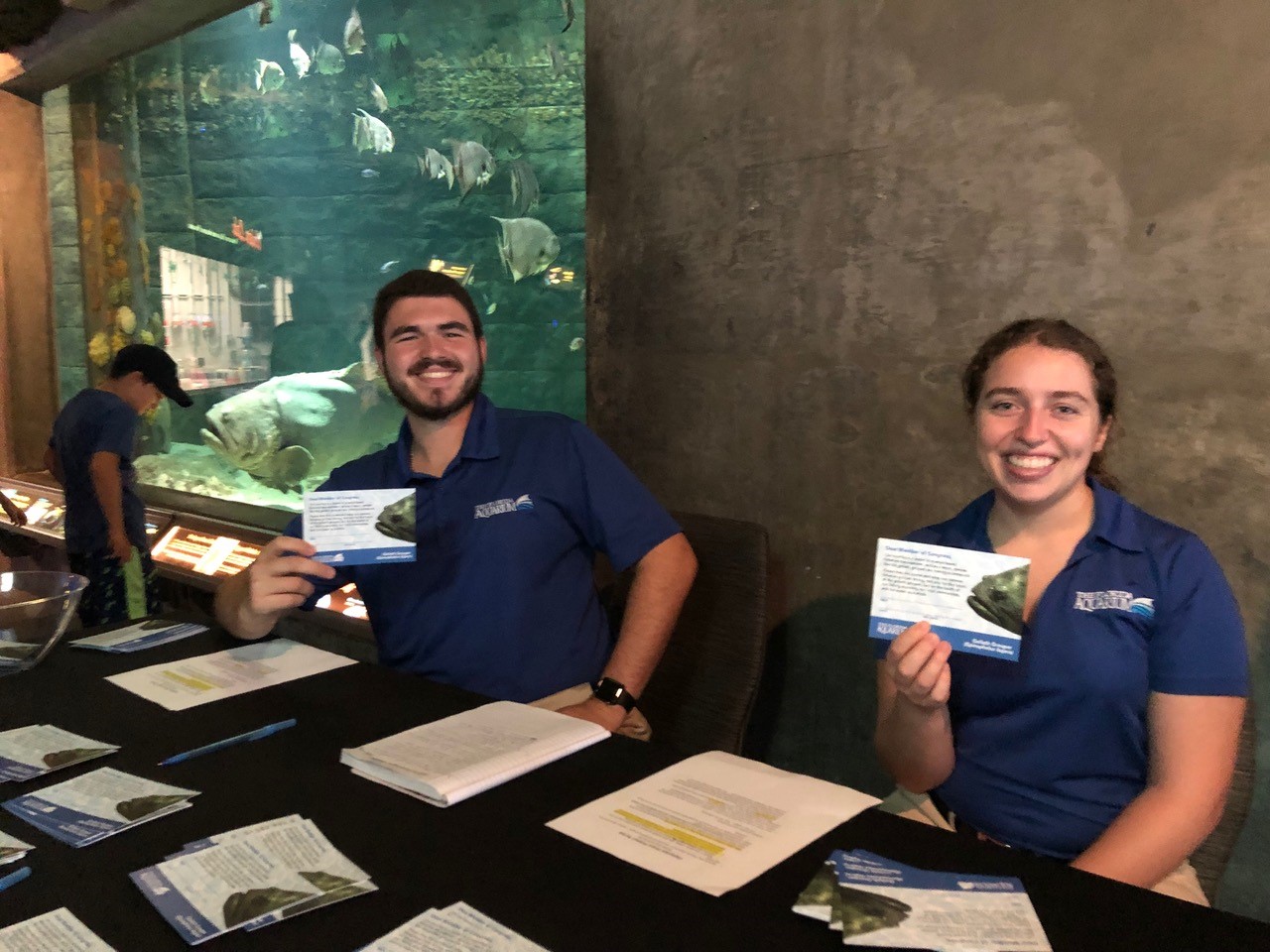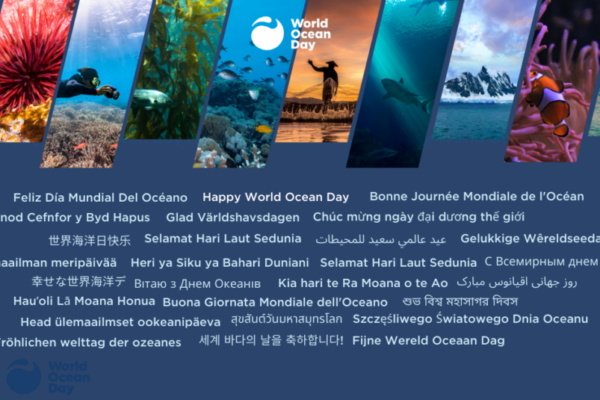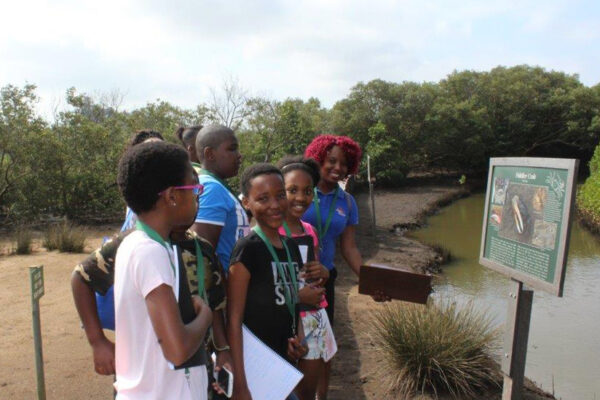A second round of public engagement efforts has expanded our collective understanding of how best to connect with the visiting public about science-based fisheries management policies.
“The timing is critical as Congress could revisit these policies as soon as next year and aquariums and zoos can play a vital role in raising awareness of the progress the United States has made in managing fisheries,” said Tom Adams, Policy Advisor to The Ocean Project. “However, the current reality is that many of us who want fish on our plates and fish in the ocean will never have heard of fisheries policy. Congress will hear from the special interests, but the recently concluded visitor engagement projects demonstrate that this is a unique moment and opportunity to build a well-informed public that will yield even more success stories.”
Aquariums and zoos with interest in applying these approaches, please email us at [email protected]!
The initial efforts, competed in the summer of last year and summarized here confirmed that it was indeed possible to engage visitors on these issues in a way that raised their awareness, documented their views, and enhanced their experience. This time, Mystic Aquarium, Seattle Aquarium and Texas State Aquarium were joined by Florida Aquarium, New England Aquarium and Virginia Aquarium & Marine Science Center. The six sites set out to build upon the successes and lessons learned, as well as the experience with Seafood Watch, and fine tune the engagement approaches. The end goals for the effort remained the same:
Primary goals:
-
- Raise visitor awareness of seafood issues
- Document visitor support for science-based fisheries management policies
Secondary goals:
-
- Enhance recognition of the role of aquariums and zoos in conservation
- Maintain the overall quality of the visitor experience
Each of the six sites applied a common story framework, with messaging aligned to the
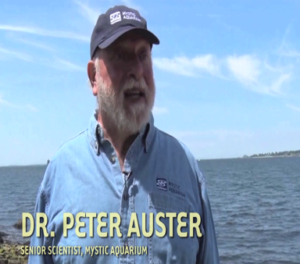
good advice from Heartwired for the Ocean and an ask to show support for keeping the policies sound.
- Begin with the story of a local fish species that is recovering
- Connect that story to the sustainable seafood choices that have been promoted by programs such as Seafood Watch, as well as national fisheries policy
- Include carryover benefits to surrounding environment and local community
- Relay urgency, and ask for a show of support by signing a comment card to Congress
Each aquarium then customized its approach to delivering the messaging and making the ask based on the phase one findings as well as the specifics of their site.
- Mystic Aquarium built upon its success by teaming up this time out with New England Aquarium by developing and filming a joint video PSA that they could show before their sea lion presentation. They described it as follows, “A staff member introduced and aired the PSA…at the start of our sea lion presentation. At the conclusion of the PSA, the audience was encouraged to sign one of the cards to Congress that we had posted to the walls along the exits to the theater. Additional staff were stationed at the two
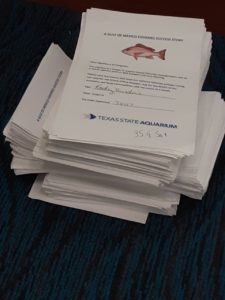 theater exits to remind guests on their way out and replenish cards in between presentations. The project was conducted over a three-day period. There were four presentations each day.”
theater exits to remind guests on their way out and replenish cards in between presentations. The project was conducted over a three-day period. There were four presentations each day.” - New England Aquarium showed the video in their IMAX theater. They explained their efforts as follows, “We handed out postcards to each party as they were getting their ticket scanned for the IMAX movie. Prior to the film starting, a staff person introduced the PSA co-produced with Mystic Aquarium and explain
ed that visitors could sign the postcard and we would collect them a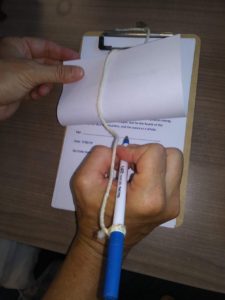 t the end of the film. The PSA then aired followed by the regularly scheduled IMAX film. At the end of the film, a staff person reinforced the postcards and the drop-off spot.”
t the end of the film. The PSA then aired followed by the regularly scheduled IMAX film. At the end of the film, a staff person reinforced the postcards and the drop-off spot.” - Texas State Aquarium doesn’t have projection capabilities at their animal theater, so they took the script from the PSA and cleverly had an interpreter deliver the same story. They described it as follows, “An interpretive specialist spoke to guests while they waited in the outdoor amphitheater for dolphin shows, using a script adapted directly from the PSA developed by Mystic and New England. After the show, staff and volunteers passed small clipboards with the letters and pens, and the specialist again asked the guests to consider signing.”
- Florida Aquarium and Virginia Aquarium tried smaller group settings, tabling as shown here, and presenting as visitors waited in line respectively. In Florida, they noted, “Staff tabled in front of our popular goliath grouper, Cletus, to share his story as an example in relation to the need to support fisheries legislation by signing a card.” In Virginia, “A staff member engaged guests waiting in the entran
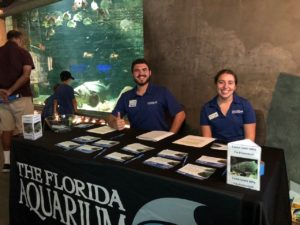 ce line and lobby with plush version of the fish, delivered the 4-point script and then directed guests to sign postcards to Congress that were on a table located near the exhibit entrance. Previously signed cards were posted on a corkboard at the table and guests could ‘feed’ their card to a poster board fish mailbox.”
ce line and lobby with plush version of the fish, delivered the 4-point script and then directed guests to sign postcards to Congress that were on a table located near the exhibit entrance. Previously signed cards were posted on a corkboard at the table and guests could ‘feed’ their card to a poster board fish mailbox.” - Seattle Aquarium tried the bold approach of bringing the messaging into their food service, serving up rockfish tacos along with the story framework. They described it as follows, “There were signs at the entrance to the café as well as a sign on the counter and table tents on all of the indoor tables (telling the story). Café staff wore buttons (“Ask me why our rockfish rock”) and we had two special menu items—a rockfish fillet and a canary rockfish-themed orange mocha. Café staff handed out comment cards at the register and asked visitors to sign them; visitors could sign and return them directly to the cashier or leave them in the drop boxes at the café exits.”
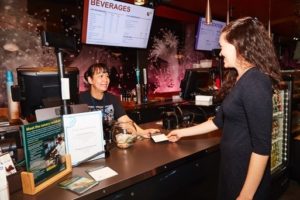
To be able to compare results across the sites, everyone used the same approach to evaluation:
- Tracked response rates for comment cards
- Collected 2,500 randomly sampled exit surveys, and compared the responses of those who did and did not receive the messaging and ask
- Collected qualitative staff feedback
The results? Note: please remember this was typically less than a two minute engagement.
- YES! The visitors who received the messaging and the ask were very willing to sign the cards.
- Of the more than 110,000 visitors who came to the six sites during the effort, more than 16,000 received the messaging and a card to sign, with a whopping 3,842 (23%) signing
- In those instances when visitors were personally handed a card, the response rate approached an impressive 50%
- YES! The visitors who received the messaging and the ask consistently expressed higher awareness and support for the issues than those who did not. They also expressed higher levels of belief that their actions mattered.
- YES! The visitors who received the messaging and the ask consistently expressed more recognition and appreciation for aquariums, and consistently had higher satisfaction scores. Special thanks to the Texas State Aquarium, which did some extra sampling that suggested that those who attended their animal presentation were more likely to be interested in the messaging, but of course needed to receive it for us to see a shift in opinion.
- YES! Staff like it too! We asked staff what they thought of the engagement, and whether they would recommend it to others. Without exception the response was positive, with one staffer summing up their feelings as follows, “Absolutely! It was heartening to hear, when thanked for their participation, a few guests respond along the lines of ‘Thank you all for making it so easy!’ They clearly understood, and appreciated, the (effort).”
Where do we go from here? Congress is likely to revisit these issues in the new year. And when they do, aquariums and zoos can play a critical role informing the public about the importance of these policies. Please let us know if your aquarium or zoo would be interested in participating!

When looking at the results in comparison to the goals, the group gatherings – such as animal presentations and film screenings – again appear to provide the best combination of reach and results for time and money invested. What might otherwise be “dead time,” when visitors are waiting for a show to begin, can be put to good use for conservation and experience alike.
With this in mind, we anticipate making the New England video available to others in the region who may wish to screen it for their own audiences, perhaps even inserting their own experts to localize it further. Aquariums and zoos in other regions that are interested in getting involved with us on helping engage your visiting public about science-based fisheries management policies, and conservation policy more broadly, please let us know. During the remainder of 2019 we will create an engagement kit, complete with “recipe and ingredients,” aimed at enabling interpreters across the country to maximize the impact when speaking directly to larger groups. Expect that kit to be completed soon and ready for you early in the new year!

